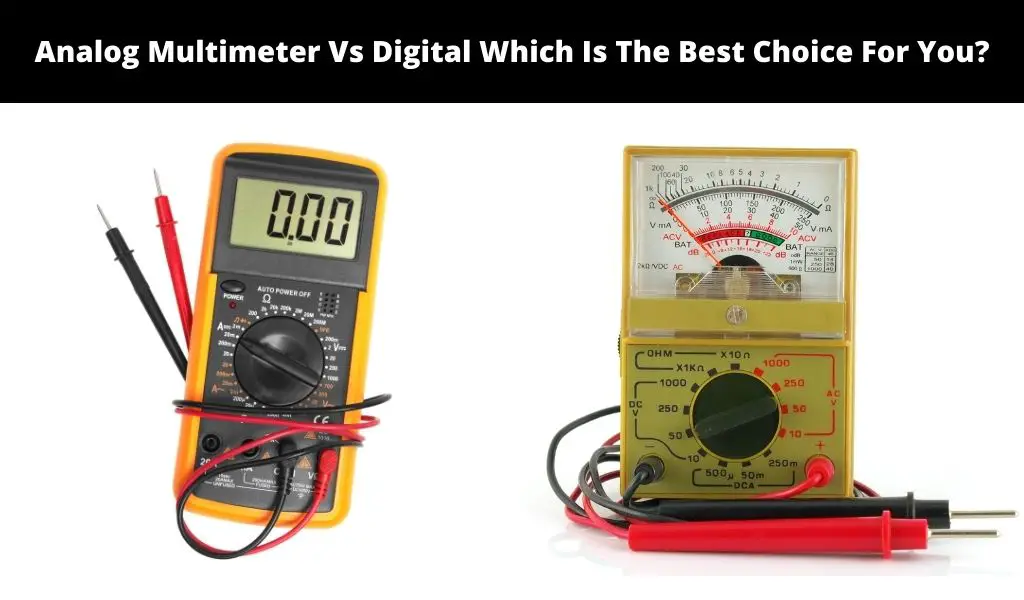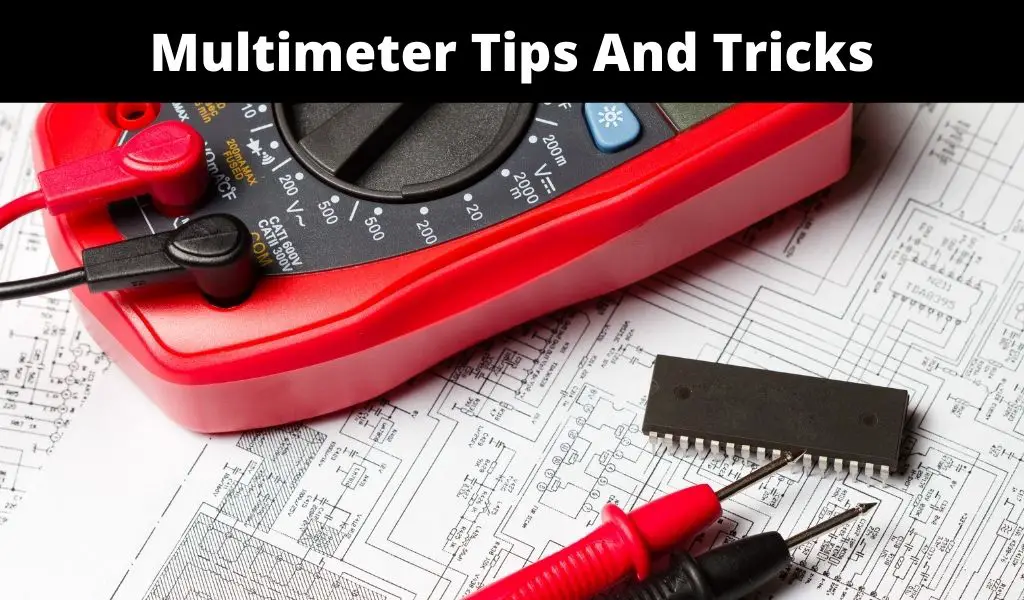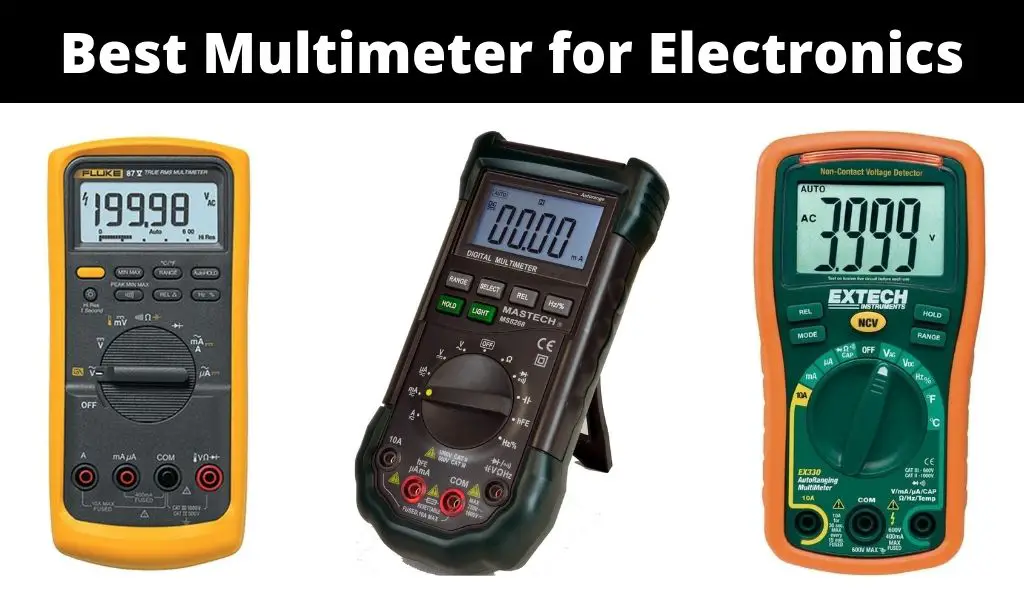Technology is part of our daily work. We use it in simple and more complex forms to make our work more efficient. But the rapid change in technology often leaves us asking whether new technology outdoes older forms. In our case, we may wonder whether digital multimeters are better than analog ones. Analog multimeter vs digital – which is the best choice for you? But even before answering that key question, we may want to understand what multimeters are.
A multimeter, also known as a multitester or volt-ohm-meter (VOM) is a tool used to record electric current or amperage, voltage, and resistance. More complex multimeters can also measure alternating current (AC), direct current (DC), capacity (Farads), Frequency (Hz), and conductance (Siemens) among others.
Multimeters are handy in several fields where electricians perform tasks that range from simple tests for battery voltage, to making out faults in complex electrical appliances, and troubleshooting motor engines and complex wiring systems.
Multimeters can be found in both analog and digital versions. Each of these has strengths and drawbacks which can be used to decide whether it is best to acquire analog multimeters vs digital ones.
Analog Multimeters
An analog multimeter uses a microammeter to measure amperage. When differentiating analog multimeters vs digital versions, the core differentiating characteristic is that the analog VOM displays a needle pointer to indicate the current, resistance or voltage value while a digital version simply displays a number on the multitester screen. The needle on an analog multimeter moves on a graduated scale to show amperage.
Analog multimeters have several strengths:
- They are less expensive when compared to their digital counterparts.
- Because values are displayed on a graduated scale, analog multimeters are best for detecting slow voltage changes by observing the gradual movement of the pointer.
- When set as ammeters to measure electric current in amperes, analog multimeters are a preferred option because of their high sensitivity and low resistance, indicating scales as low as 50 microamperes (50µA).
- Unlike their digital counterparts, analog multimeters do not require a power source to function and can, therefore, be used anywhere as long as they are connected to the object whose power is being measured.
- From an industrial approach, analog multimeters are easier to construct than digital designs and, hence, cost-effective for the producer.
Despite these advantages, analog multimeters also have some disadvantages:
- Because they display amperage values on a scale, it may be more difficult to read the value with exactness, which may then compromise efficiency in the work for which the tool is used.
- The analog multimeters lack in durability because a fall could cause the pointer to become loose and therefore faulty in reading or altogether dysfunctional.
- Because the pointer is a moving part of the tool, this implies greater exposure to wear and tear and hence more possibility to inaccuracy.
- Because analog multimeters do not have any digital circuitry it cannot perform the complex measurements done by a digital tool including frequency, waveform, and impedance among others.
- The analog multitesters are bigger in size and, therefore, more cumbersome compared to the smaller digital designs.
Digital Multimeters
In a world described as digital, multimeters are readily available in digital versions. In addition, they can be purchased in simple and more complex designs. In contrast to the arm that points to amperage values on an analog multimeter, digital multimeters record a numerical reading on an LCD screen.
Because they are a newer technology, the advantages of digital multimeters may outweigh those of the analog version. They include the following:
- Digital multimeters exceed their analog counterparts when it comes to precision in presenting exact electric current and voltage values. The value indicated by a digital multimeter is highly accurate.
- Because the amperage is recorded in values, anyone using the tool can easily read the digit without the struggle of making out the minute values that the pointer on an analog multimeter may tend towards.
- Digital multimeters are usually made with additional strength to being shockproof in case of falls, and with resistance to dust and water. This renders them more durable when evaluated alongside their analog counterparts.
- Compared to analog versions, digital multimeters can measure more values including current, voltage, continuity, frequency, resistance, temperature, and capacitance among other values.
- They surpass their analog competitors because they are smaller and so easily portable.
- Some digital multimeter designs may come with microprocessors, allowing them to store previous reading for later reference and processing.
As with their analog competitors, digital multimeters also come with a number of downsides:
- You dig deeper into the pocket when purchasing digital multimeters than you would if you were buying an analog version.
- The LCD screen relies on a battery or an electric power source which means that low battery power can cause the value to dim and render it difficult to decipher.
- Unlike analog multimeters where sensitivity to value fluctuations causes the pointer to move towards the new reading, digital multimeters can easily read these changes as an error, requiring the user to start the measuring process afresh.
- The converter in some digital multimeters has a limit of letters/digits which can make it record a syntax error in place of the value being measured.

Analog Multimeter Vs Digital: Making Your Choice
As with other devices, when purchasing a multimeter, the buying decision may be determined by preference. But what exactly informs your preference for an analog multimeter vs a digital one. One may list qualities such as durability, the accuracy of value, ease of use, portability, and price as determining factors.
Digital multimeters may fail the price test but they pass the test for all other characteristics better than the analog option. If this should not be enough reason to go for a digital multimeter, one may bear in mind that the digital design of multimeters is becoming more and more popular because the market is adapting to the technological demands of our times. Besides, because they are becoming more common, the prices of digital multimeters are reducing simultaneously.






